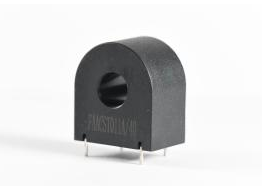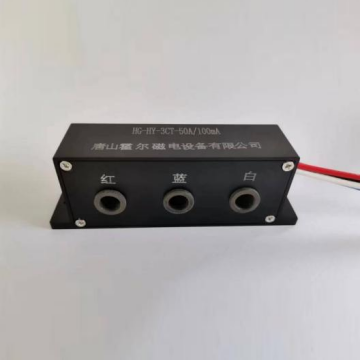Why Annular Notch Amorphous Inductor Cores Matter?

New electronic devices have evolved considerably and have proceeded to require more of the materials used in power conversion, signal processing, and magnetic applications. Of these, amorphous cores are the foundation on which efficiency is maximized and power loss is minimized. Annular notch amorphous core is one new technology that is now being considered due to its unique construction and increased magnetic performances. We will discuss the characteristics, usage, and benefits of annular notch amorphous inductor core technology in this article.
What are Annular Notch Amorphous Cores?
Annular notch amorphous cores are magnetic cores composed of amorphous alloys—non-crystalline atomic groups. In contrast to typical silicon steel or ferrite cores, the amorphous cores are produced via rapid solidification, which forms a disordered atomic topology. Such topology reduces magnetic losses and provides improved performance for high-frequency applications.
The “annular notch” form is where tiny notches or gaps are made on the ring form of the core. They are specifically intended to optimize magnetic flux distribution and minimize eddy current losses. Therefore, an amorphous core for annular notch inductors is more efficient than any other magnetic core, making it suitable for amorphous core for high-stability inductors and amorphous core for flux control applications.
Major Benefits of Annular Notch Amorphous Inductor Cores
1. Low Core Losses
The benefit of annular notch amorphous cores is that they have very low core loss, particularly for high-frequency or high-load applications. The amorphous structure significantly reduces hysteresis losses, which is one of the main demands of future power systems for optimal energy efficiency. This is why designers often adopt an amorphous block core or an amorphous core with low coercivity for advanced designs.
2. High Saturation Magnetic Flux Density
An annular notch amorphous inductor core has a higher saturation magnetic flux density than most standard cores. This allows smaller and lighter inductors or transformers to be designed without sacrificing performance. For instance, using an amorphous core with high flux density or an amorphous core with high saturation enables compact designs, such as an amorphous core for lightweight transformers and an amorphous core for compact transformers.
3. Improved Thermal Stability
The unique alloy content of amorphous cores provides superior thermal stability. This renders annular notch amorphous cores a suitable choice for utilization in high-stress applications such as automotive electronics, renewable energy, and industrial power converters. For medical and safety-critical systems, designers even turn to amorphous core for medical transformers, amorphous core for MJ 1-0.5 ct, or amorphous core for lwx miniature ct.
4. Reduced Audible Noise
Annular notch amorphous inductor cores are quieter than regular laminated cores because they lack grain boundaries. This is an extremely desirable feature where quiet operation is required, such as in audio equipment or precision instrumentation. In fact, amorphous cores for noise reduction and amorphous cores for low-Q inductors are often selected for precision EMI and filter applications.
Applications of Annular Notch Amorphous Cores
1. Power Electronics
Annular notch amorphous cores have vast applications in new power supplies, DC-DC converters, and inverters for loss savings and efficiency. They can be used in an amorphous core for switching power supplies, an amorphous core for AC-DC converters, and an amorphous core for robust power supplies due to the high magnetic permeability and low loss. Similarly, amorphous core for output inductors, amorphous core for power line filters, and amorphous core for EMI filters are increasingly used in high-frequency environments.
2. Renewable Energy Systems
Since the world is turning towards energy derived from renewable sources, annular notch amorphous inductor cores are applied in amorphous core for wind inverters and amorphous core for next-gen inverters. They are also crucial in amorphous core for eco-friendly transformers and amorphous core for cost-effective transformers, helping minimize energy waste in solar inverters and power storage systems.
3. Electric Vehicles (EVs)
The rapidly growing EV market requires lightweight and compact components. With amorphous core for lightweight inductors and amorphous core for IoT devices, engineers can design onboard chargers and powertrain modules with better magnetic properties and compact size. Applications also include amorphous core for battery chargers and amorphous core for line reactors used in EV drive systems.
4. Industrial Automation
In robotics, factory automation, and industrial drives, amorphous core for servo drives, amorphous core for stacked transformers, and amorphous core for traction transformers are highly valued due to their efficiency. They also support amorphous core for filter chokes, amorphous core for narrowband filters, and amorphous core for oval chokes in complex power control circuits.
Design Challenges for Annular Notch Amorphous Cores
1. Core Geometry and Notch Position
Notch position and number of notches in the annular notch amorphous core directly affect magnetic flux distribution and efficiency. Optimizing the amorphous core with tailored magnetic properties or the amorphous core with uniform magnetic properties is critical for system-level design.
2. Coil Winding Compatibility
With annular notch cores, coil winding methods must be specially adapted. Using an amorphous c-core or amorphous core with precision cutting ensures winding flexibility and repeatable performance.
3. Thermal Management
Although they are very efficient thermally, additional cooling may be required. Techniques such as resin-coated cores (amorphous core with resin coating) or liquid cooling extend life and dependability.
Future Prospects of Annular Notch Amorphous Core Technology
When circuits are miniaturized and the power density rises, annular notch amorphous inductor cores will form the basis of future electronics. Future research will focus on alloy optimization for amorphous core with low magnetostriction, expansion into amorphous core for integrated transformers, and usage in amorphous core for UPS transformers. These developments will further reduce losses, raise operating frequency, and make amorphous core for flux balance and amorphous core for low-frequency applications more accessible for next-generation designs.
Conclusion
Annular notch amorphous core technology is an advancement in magnetic components. Blending low losses of amorphous material and notch geometry designed for higher efficiency, these cores outperform traditional alternatives. Whether in amorphous core for traction transformers, amorphous core for next-gen inverters, or amorphous core for high-current inductors, engineers can rely on this innovation to enhance energy efficiency and system performance across renewable energy, EVs, and industrial electronics.





